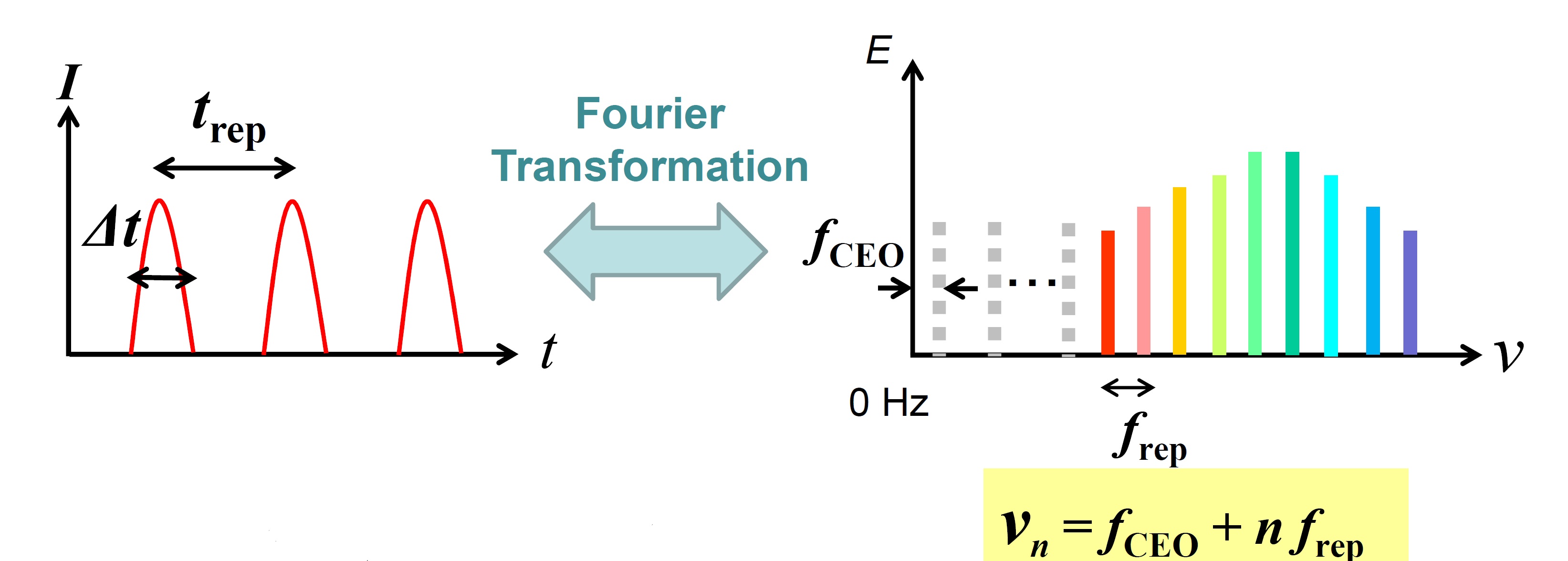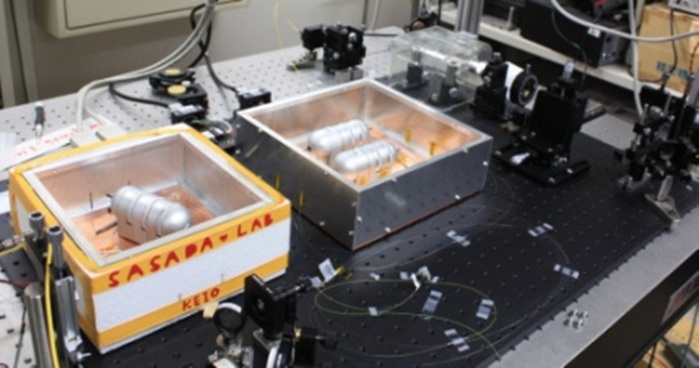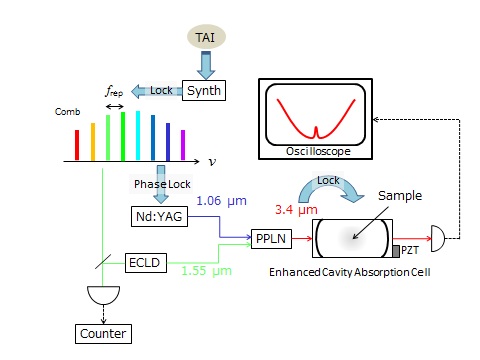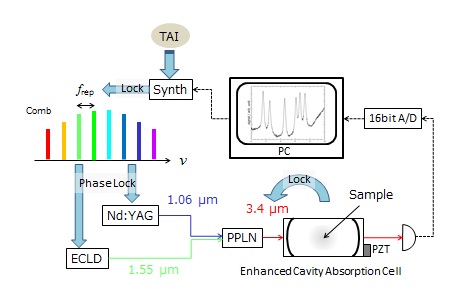Sasada Lab.
Unofficial Website
Research theme
Frequency measurement with a fiber-based optical frequency comb
1. Role of an optical frequency comb
An optical frequency comb was developed about 2000 by Dr. Hänsch and Dr. Hall as a frequency ruler for accurate optical frequency measurements. In general, we can measure only up to a few hundreds GHz at most with an electric frequency counter. To measure the optical frequency, we had to realized a frequency chain that contains a number of lasers, mixers, and frequency stabilization systems. The advent of the optical frequency comb made the optical frequency measurements much easier.
The optical frequency comb is a mode-locked laser, and the oscillation modes are equally separated in the spectrum (Fig. 1).

Fig. 1: Outline of optical frequency comb
The separation is called the repetition frequency frep. Extending the oscillation mode to 0 Hz, the remainder is called a carrier envelope offset frequency fCEO, even though the laser oscillates in the optical region. The n th mode frequency is given as νn=n frep + fCEO, where frep and fCEO are radio frequency of a few tens MHz to a few GHz. The mode number n is integer and approximately 106 for the wavelength of 3.4 μm. When frep and fCEO are stabilized to the international atomic time received by GPS, we can determine the absolute frequency of the optical radiation.2. Advantages of the fiber comb
The optical frequency comb is usually a solid-state laser or a fiber laser. We have developed an optical fiber comb , in which an entire cavity is made of an optical fiber. The fiber comb is inexpensive, simple for operation, robust against circumstance variations, and comparatively easy-to-use to operate (Fig. 2).

Fig. 2: Fiber comb
3.Use in Sasada lab.
(1)As a frequency counter
The difference frequency generation (DFG) frequency is stabilized to the molecular absorption line, and the frequencies of the pump and signal sources are then measured with the fiber comb1(Fig. 3).

Fig. 3: Fiber comb as a frequency counter
(2)As a frequency reference
The pump and signal sources are frequency-stabilized to the coresponding modes of the fiber comb. The mid-infrared frequency is then swept by changing frep. The frequency axis of the spectrum is calibrated against the absolute frequency (Fig. 4). Furethermore, a long averaging of the spectrum enhances the sensitivity of the spectrometer.

Fig. 4: Fiber comb as frequency reference
List of publications
- K. Takahata, T. Kobayashi, H. Sasada, Y. Nakajima, H. Inaba, and F.-L. Hong, "Absolute frequency measurement of sub-Doppler molecular lines using a 3.4-μm difference-frequency-generation spectrometer and a fiber-based frequency comb," Physical Review A, 80, 032518 (2009).
- S. Okubo, H. Nakayama, and H. Sasada, "Hyperfine-resolved 3.4-μm spectroscopy of CH3I with a widely tunable difference frequency generation source and a cavity-enhanced cell: A case study of a local Coriolis interaction between the v1 = 1 and (v2,v6l) = (1,22) states," Physical Review A, 83, 012505 (2011).
- K. Iwakuni, S. Okubo, and H. Sasada, "A novel frequency control scheme for comb-referenced sensitive difference-frequency-generation spectroscopy," Optics Express, 21, 14832-14840 (2013).